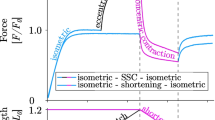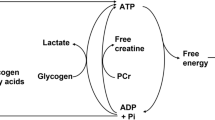Abstract.
The effects of long-term depolarization on the level of α1s and on L-type Ca2+ currents of skeletal muscle were investigated. Long-term depolarization (14 h) caused a 50% decrease of α1s, revealed with the Western blot technique. This decline was prevented by preincubation with the Ca2+ channel blocker nifedipine. Electrophysiological experiments using the voltage-clamp technique were performed to measure the actions of long-term depolarization on Ca2+ currents and charge movement. A progressive decline in the amplitude of the Ca2+ currents by depolarizations lasting 0.5–14 h was observed. Similar to Western blot results, the fall in current amplitude was prevented by nifedipine, and it depended on external Ca2+. The nonlinear charge mobilized by step pulses was also significantly reduced (50%) by long-term depolarization. It is suggested that α1s subunit is down-regulated by long-term depolarization by a very stringent mechanism and that, in this process, Ca2+ ions permeating through L-type channels play a key role. A new role for the L-type Ca2+ current in skeletal muscle fibers in which the channels are self-regulated is proposed.
Similar content being viewed by others
Author information
Authors and Affiliations
Additional information
Electronic Publication
Rights and permissions
About this article
Cite this article
Escamilla, J., Farías, J.M., García, R. et al. Long-term depolarization regulates the α1s subunit of skeletal muscle Ca2+ channels and the amplitude of L-type Ca2+ currents. Pflügers Arch - Eur J Physiol 442, 882–890 (2001). https://doi.org/10.1007/s004240100606
Received:
Revised:
Accepted:
Issue Date:
DOI: https://doi.org/10.1007/s004240100606




